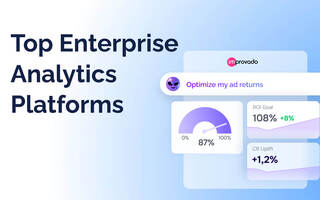
Improvado
Improvado automates the annoying parts of data management. With Improvado, marketers are no longer at the mercy of non-scalable manual processes. Costly and valuable developer time is now freed up, no longer from having to create interfaces, host and maintain databases, normalize data, and visualize reports.
Stitch
Stitch Data is a cloud-first, open-source ETL platform that enables business teams to rapidly and securely move data from multiple sources to designated data warehouses for fast and efficient analysis.
The platform is an integral part of the Talend Data Fabric, providing prebuilt connectors to over 100 databases and SaaS applications, with support for leading data warehousing platforms like Snowflake, RedShift, BigQuery, and Azure Synapse Analytics.
Stitch Data offers a simple interface with ready-to-query schemas designed to accelerate the process of onboarding and extracting insights from new data sources.
The platform, as stated in one of its documentation pages, does not support user-defined data transformation. This means that you can't carry out advanced data transformation processes on the platform. It does support and automate a few basic preload transformation processes, like JSON structures, data typing, object names, etc., but these are only sufficient for light- and medium-duty data warehousing needs. Advanced data transformation capabilities can only be accessed by signing up on Talend, Stitch Data's "parent platform".
The platform is also compliant with major security protocols, including SOC-2 and HIPAA.
Integrate.io (ex Xplenty)
Formerly known as Xplenty, Integrate.io is an ETL and ELT platform that lets users build automated pipelines that transform business data into actionable insights in real-time and at scale.
The platform offers integration to over 100 data sources alongside 200+ transformation options, making it easy for users to push analysis-ready data into their required destinations for reporting, analytics, and attribution.
One interesting component of its ETL infrastructure is the reverse ETL tool. This allows users to pull data from warehouses into business platforms like CRMs, marketing automation tools, and analytics platforms for easy activation. The platform also allows users to schedule their pipeline and monitor changes throughout the integration process.
Integrate.io's ELT solution allows users to leverage data replication for unifying data streams into one destination. It offers auto-schema mapping functionalities, which you can use to consistently maintain clean column, row, and table updates.




